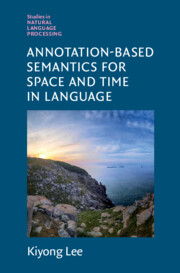Book contents
12 - Dynamic Paths, Projection, and Orientation
from Part III - Motion, Space, and Time
Published online by Cambridge University Press: 05 August 2023
Summary
In this chapter, I introduce the four types of category path: static, dynamic, oriented, and projected, while characterizing them for the interpretation of path-related information in language. Static paths are finite paths with two endpoints, but neither of the endpoints is identified intrinsically as the start or the end of a path. Dynamic paths are trajectories caused by motions. Oriented paths are simply directed to some goals and may not reach the goals. Projected paths are virtual or intended, which are not actually traversed but devised in the mind of a human or rational agent. To discuss their characteristic features in formal terms, I introduce Pustejovsky and Yocum’s (2013) axioms on motions and derive a corollary based on them. This corollary relates a mover to an event-path. I then show how the movement link (moveLink) is reformulated to link a mover to a motion-triggered event-path with the relation traverses. I also analyze the notions of orientation and projection with respect to the frames of reference, either absolute, relative, or intrinsic, while showing how these frames apply to the annotation and interpretation of oriented or projected paths.
Information
- Type
- Chapter
- Information
- Annotation-Based Semantics for Space and Time in Language , pp. 368 - 405Publisher: Cambridge University PressPrint publication year: 2023
